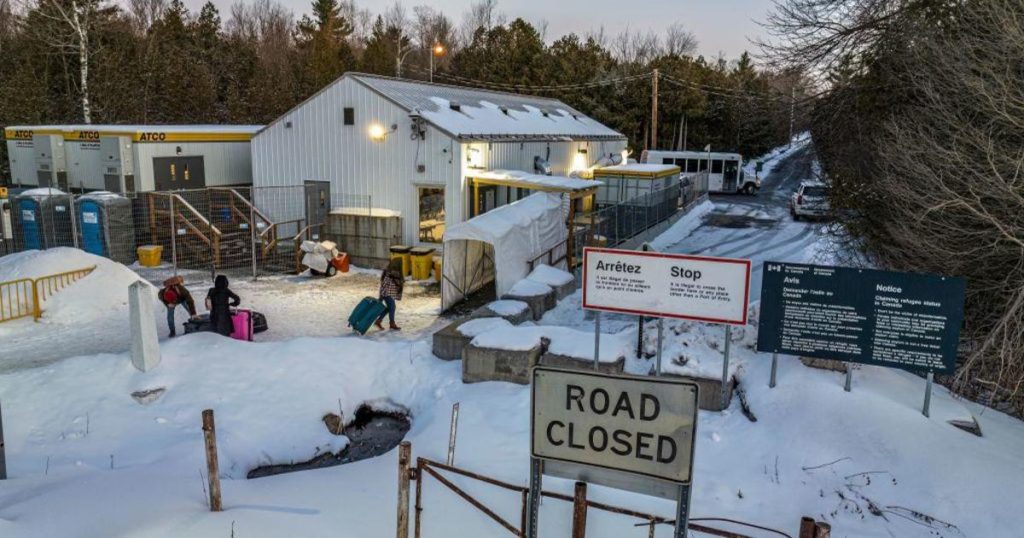The Biden administration is implementing changes to the processing of asylum-seekers at the U.S.-Canada border in order to address a significant increase in migrant crossings. The changes involve modifications to the Safe Third Country agreement between the U.S. and Canada, which allows for the return of asylum-seekers across the shared border under the assumption that both nations are safe for refugees to request asylum. The first change will require migrants to have their documents ready for screenings with U.S. asylum officers, while the second change will reduce the time for migrants to consult with lawyers before their screenings to a minimum of four hours. These changes are aimed at expediting the processing and deportation of migrants along the 5,500-mile northern border where apprehensions have spiked in the fiscal year 2024.
Migrant apprehensions at the northern border have increased significantly in the past years, with Border Patrol agents detaining 16,500 migrants who crossed the U.S.-Canada border illegally in fiscal year 2024. This number is the highest apprehension tally along the northern border on record, despite the fact that the number of crossings at the northern border is much lower than those at the southern border. The challenges posed by the increase in migrant arrivals at the northern border are exacerbated by the limited resources and personnel available to patrol the vast and difficult terrain, which includes dense forests, mountainous areas, and wilderness. Over 75% of all migrant apprehensions at the northern border have occurred in the Swanton sector, covering rural parts of New York, New Hampshire, and Vermont.
The Biden administration’s changes to the asylum processing system at the U.S.-Canada border are scheduled to take effect on August 14, according to internal Department of Homeland Security documents. These changes align with President Biden’s efforts to restrict asylum processing at the southern border and expedite deportations. The decrease in migrant crossings at the southern border in fiscal year 2024 has been attributed to Mexico’s efforts to prevent U.S.-bound migrants, increased summer temperatures, and the Biden administration’s crackdown on asylum access. The administration’s asylum restrictions currently only apply at the southern border and nearby coastal sectors, and are facing legal challenges from migrant rights groups.
The Safe Third Country agreement between the U.S. and Canada allows for the return of migrants who are subject to the agreement to Canada, barring them from seeking asylum in the U.S. Those who qualify for exemptions are permitted to request asylum in the U.S., while migrants who cross into Canada from the U.S. and are subject to the agreement can be returned to American soil. The changes being made to the processing of asylum-seekers at the northern border are procedural in nature but are intended to streamline the handling of migrants and ensure compliance with the asylum agreement between the U.S. and Canada. The increase in migrant crossings at the northern border has posed significant challenges for U.S. immigration officials due to limited resources and the difficult terrain of the region.


